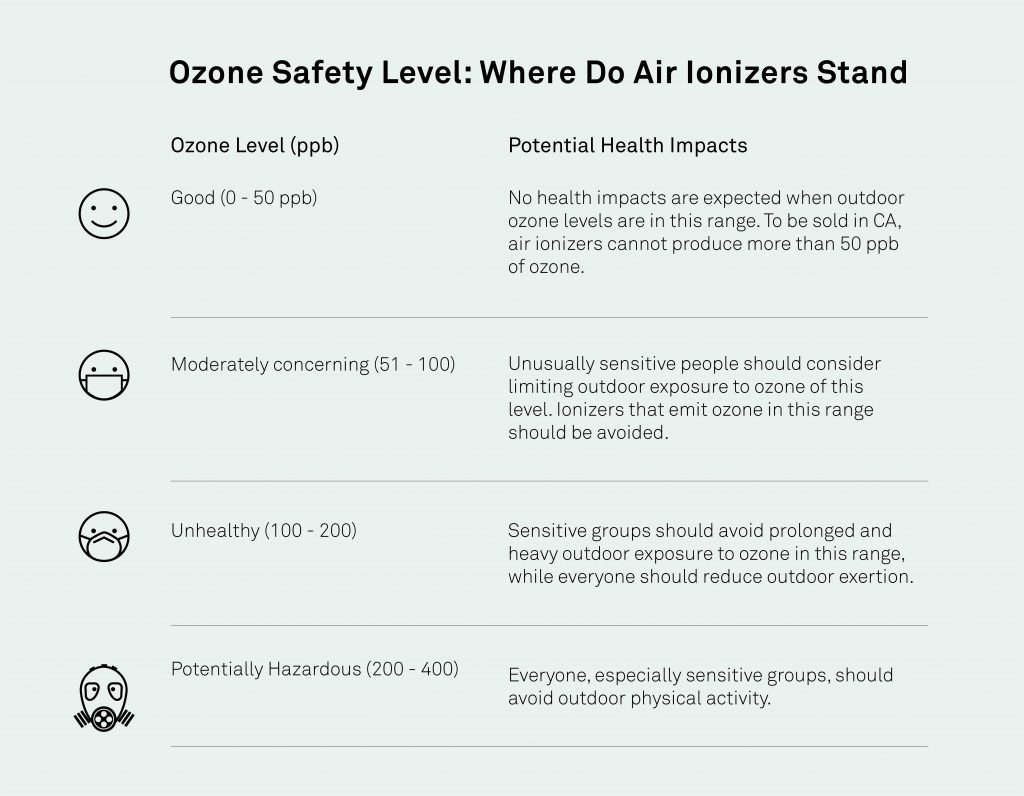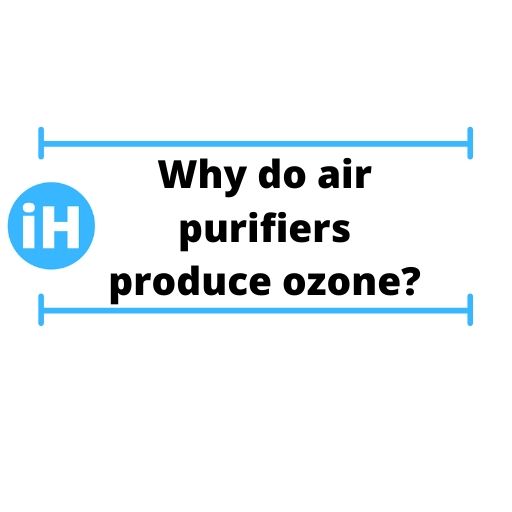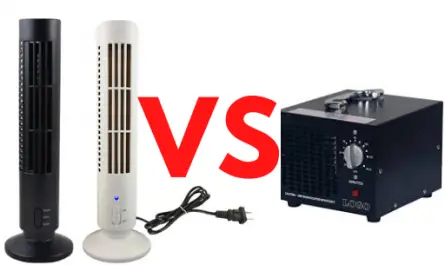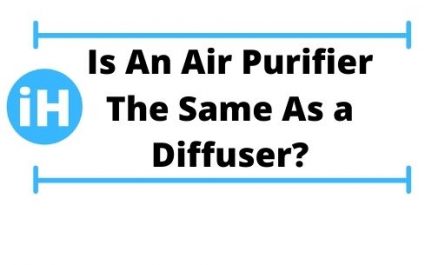Last updated on August 29th, 2021 at 10:31 am
So, you have read up a bit on air purifiers and noticed that some of them produce ozone. And now you are left wondering why do air purifiers produce ozone? No worries, I got you covered. As you will see, there are quite a few specifics needed to completely answer this question. But first, here is a short answer:
Air purifiers produce ozone as a byproduct because of a process called electrical discharge (spark). Electrical discharge basically splits oxygen molecules into elemental oxygen, which quickly attaches itself to other oxygen molecules, making ozone. The important thing to know here is that not all air purifiers produce ozone, only specific air purifier types. The majority of air purifiers do not produce any kind of ozone.
Being aware of which type of air purifiers produce ozone is a helpful thing, as you can make more informed purchase decisions. In the next few paragraphs, we are going to take a more in-depth look at this matter.
Which types of air purifiers produce ozone
All air purifiers have the same common goal – clean air. But the way they achieve that is very different, which is why we have quite a few different types of air purifiers on the market. As I already hinted in the intro, not all air purifiers produce ozone. So which ones do? Let us take a look.
Air purifiers that DO NOT produce ozone: Air purifiers that use HEPA technology, Activated Carbon technology, some Air ionizers, very few air purifiers that use UV technology.
Air purifiers that DO produce ozone: most air ionizers, most air purifiers that use UV technology, Ozone generators (Ozonators).
Air purifier type | PRODUCES OZONE | DOES NOT PRODUCE OZONE |
HEPA Technology | ||
Carbon Activated Technology | ||
Air ionizer |
| |
UV light Technology | ||
Ozone generator |
You probably notice that some names are listed under both categories. Do not worry, I will explain everything as we go.
As a side note, I am not going to be including ozone generators in a more in-depth explanation. This is because their sole purpose is to clean the air with only ozone, so the answer to “why do ozone generators produce ozone?” kind of answers itself. That being said, let us take a closer look at both of the other two air purifier types that do produce ozone.
Air ionizers
Air ionizers (also called ionic air purifiers or negative ion generators) are the most interesting and confusing type, as we can find them in both groups. Let me say this upfront: the majority of air ionizers generate ozone. You can, however, find some exceptions to that rule. This all boils down to which element of ionization an air ionizer is using.
For air ionizers, the first step of the air purifying process is negative ion production. As I already wrote in my other post, air ionizers use electricity (electrostatically charged plates) to create negative ions. This molecular reaction also creates ozone by breaking down oxygen into atomic oxygen. In nature, you can find this example during lightning strikes, where the same oxygen-breaking process occurs.
After negative ions are made, they have to somehow exit the machine in order to start cleaning the air. The three common ways of that are through steel needle, plasma, and membrane – these can not stop ozone from forming and exiting the air ionizer. I have also come across two other options – a golden needle and a carbon brush. Both of these nullify ozone before it has a chance to exit the machine. While the latter two are not very common, they do exist. So what I am trying to say is that a small number of air ionizers have the ability to stop ozone before it leaves the device. It all depends on how (or through which element of ionization) negative ions leave the device.
So, air ionizers produce ozone because of the process of creating negative ions through electricity. A sidenote: If you have ever been outside during a thunderstorm you probably noticed that the air smells “fresher”. Well, lightning strikes produce ozone which you can smell, usually right after the strike – this is that fresh smell that I am talking about. But do not worry – it is not harmful, our noses are just fantastic at detecting the tiniest amount of it.
UV technology
This is the other popular group of air purifiers that produce ozone. So why do UV-C air purifiers produce ozone? Because at certain wavelengths the UV light breaks down oxygen (O2) into atomic oxygen(O), which attaches itself onto another oxygen (O2+O)forming ozone (o3). Sounds pretty familiar? Yes, it is exactly the same process as we saw with air ionizers. The only difference is how the method for breaking down oxygen into atomic oxygen.
Let me explain this a little further. UV light is just one type of electromagnetic energy that our sun produces. It comes in different wavelengths, measured in nm (nanometers):
- UVV (Vacuum wavelength) which is from 100 and 200 nm;
- UV-C which is from 200 to 280 nm;
- UV-B which is from 280 to 315 nm;
- UV-A which is from 315 to 400 nm.
Air purifiers with UV technology use exclusively UV-C exposure for air cleaning. Why? Because the UVC wavelength (200 to 280 nm) is most effective at killing microorganisms, which is what people primarily use this type of air purifier for. Although all UV wavelengths kill bacteria and viruses, UV-C does it best. That is great and all, but how does it relate to ozone? Well, only a certain wavelength range has certain attributes that enable ozone creation. Only wavelengths shorter than 240 nm produce ozone, while anything over 240 nm destroys it. And since most air purifiers use UV-C light below 240, they produce some ozone.
Ozone amount
So far we have established which types of air purifiers produce ozone and why they produce it. The last piece of the puzzle is understanding how much ozone these devices produce, and how much ozone is too much?
Governmental agencies are very strict when it comes to devices that produce ozone – and rightfully so! Since ozone affects our bodies and health in a very negative way, it is very important to limit our exposure to it as much as possible. We measure ozone amount in ppm – particles per million. To give an example: 1 ppm means that is 1 particle in a million number of units. 1 ppm in percentages is therefore 0.0001%. If you divide the ppm number by 10000, you get the percentage. In the table below, you can see how ozone in certain quantities affects our health.

Different government bodies have different upper limits. I am going to mention the two that are most relevant to air purifiers – FDA (Food and Drug Administration) and EPA (Environmental protection agency). For medical devices, FDA has an upper limit of 0.05 ppm of ozone, EPA’s air quality standard for ozone is a max 8 hour average outdoor concentration of 0.08 ppm. In short, air purifiers that produce ozone most have an upper limit of 0.05 ppm for ozone production.
Different air purifiers produce a different amount of ozone. There is no common number that would apply to all purifier models. The higher the ppm number, the more ozone an air purifier produces. Be careful tho – the above graph is only a guideline and focuses on outdoor ozone exposure. Indoor ozone levels are much more dangerous because they linger in smaller spaces for a longer time!
Why Do Air Purifiers Produce Ozone – Conclusion
As you have learned throughout this post, only some types of air purifiers produce ozone – air ionizers, UV-C air purifiers, and ozone generators.
If we come back to our original question of why do air purifiers produce ozone, we can answer it completely now. Air ionizers, UV-C air purifiers and ozone generators produce ozone because of a chemical process which breaks down oxygen (O2) into atomic oxygen (O). Atomic oxygen then attaches itself to oxygen, creating ozone. The difference is that air ionizers achieve this through electricity, while air purifiers that use UV-C light do this through wavelengths shorter than 240 nm. Lastly, we have ozone generators which produce ozone because it is their actual method of air cleaning. The overall difference between them is that ozone generators make ozone on purpose, while air ionizers and UV-C light air purifiers make ozone solely as a byproduct of a chemical reaction.
Here are some tips that I have for anyone deciding to get an air purifier that produces ozone:
- While the ozone upper limit, required by FDA, is 0.05 ppm, you should always look for the lowest amount of ozone possible. When looking at different air purifiers always look at ozone production numbers (if it produces ozone). If no actual numbers are mentioned then chances are that number is closer to 0.05 than 0.
- If you suffer from allergies or have asthma, then I would definitely suggest an air purifier that does not produce any ozone. The reason being that people with respiratory issues are even more susceptible to even lower amounts of ozone.
- If a manufacturer discloses no ozone information upfront (on the product page), it does not automatically mean that there is no ozone. Always double-check.
- Try not to use an air purifier with ozone in a very small. If you do, at least keep the windows open for ozone to disperse faster.
If you are in the market for an air purifier, feel free to check my most popular lists:




